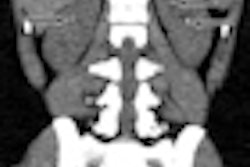Dear AuntMinnie Member,
We're pleased to announce RADExpo Fall 2012: The Cutting Edge of Imaging, the next event in our popular RADExpo series of virtual conferences.
On September 20, the RADExpo virtual conference will feature eight presentations covering some of the hottest trends in medical imaging, from PET/MRI to CT lung screening to breast tomosynthesis. The event will also include a track dedicated exclusively to imaging informatics topics, as well as a keynote address by Dr. Bruce Hillman titled "Radiology in America: The Burden of Success."
As with all RADExpo events, it's free to attend after completing a short registration. When the event begins, you'll not only gain access to our presentations, you'll also be able to network with colleagues from all over the world -- and win one of 20 fabulous prizes.
Register now to reserve your virtual seat at the meeting: To get started, just go to radexpo.auntminnie.com.
320-row CT cardiac perfusion
A new study presented this week at the European Society of Cardiology (ESC) meeting found that 320-detector-row CT can be useful for selecting which patients should be sent on for invasive angiography, according an article in our CT Digital Community.
A multinational research team developed a two-step test that uses 320-detector-row CT angiography followed by CT perfusion exams. In addition to being able to measure the size of stenoses automatically, the technique is also able to determine if they impede blood flow -- which, in turn, guides therapy. Read more by clicking here.
Also from the ESC meeting is coverage of another new CT-based cardiac imaging technique, fractional flow reserve CT (FFR-CT). The procedure is also intended to triage which symptomatic patients should be sent on to angiography, but in a single scan rather than requiring two studies.
FFR-CT produced only moderate results for diagnostic accuracy, but its area under the curve results were much better. Learn more by clicking here.
Also be sure to check out our sister site, AuntMinnieEurope.com, for additional daily reporting from the ESC meeting.
Is screening overused?
In other news, an article published yesterday in the Annals of Internal Medicine takes aim at commercial firms that offer screening studies directly to consumers.
Such services, proffered without physician referrals at drugstores, shopping malls, and the like, are frequently not indicated under established medical guidelines, and can lead to higher healthcare costs and even harm from follow-up studies, the authors claimed.
Learn more by clicking here, or visit our Imaging Leaders Digital Community at leaders.auntminnie.com.




















